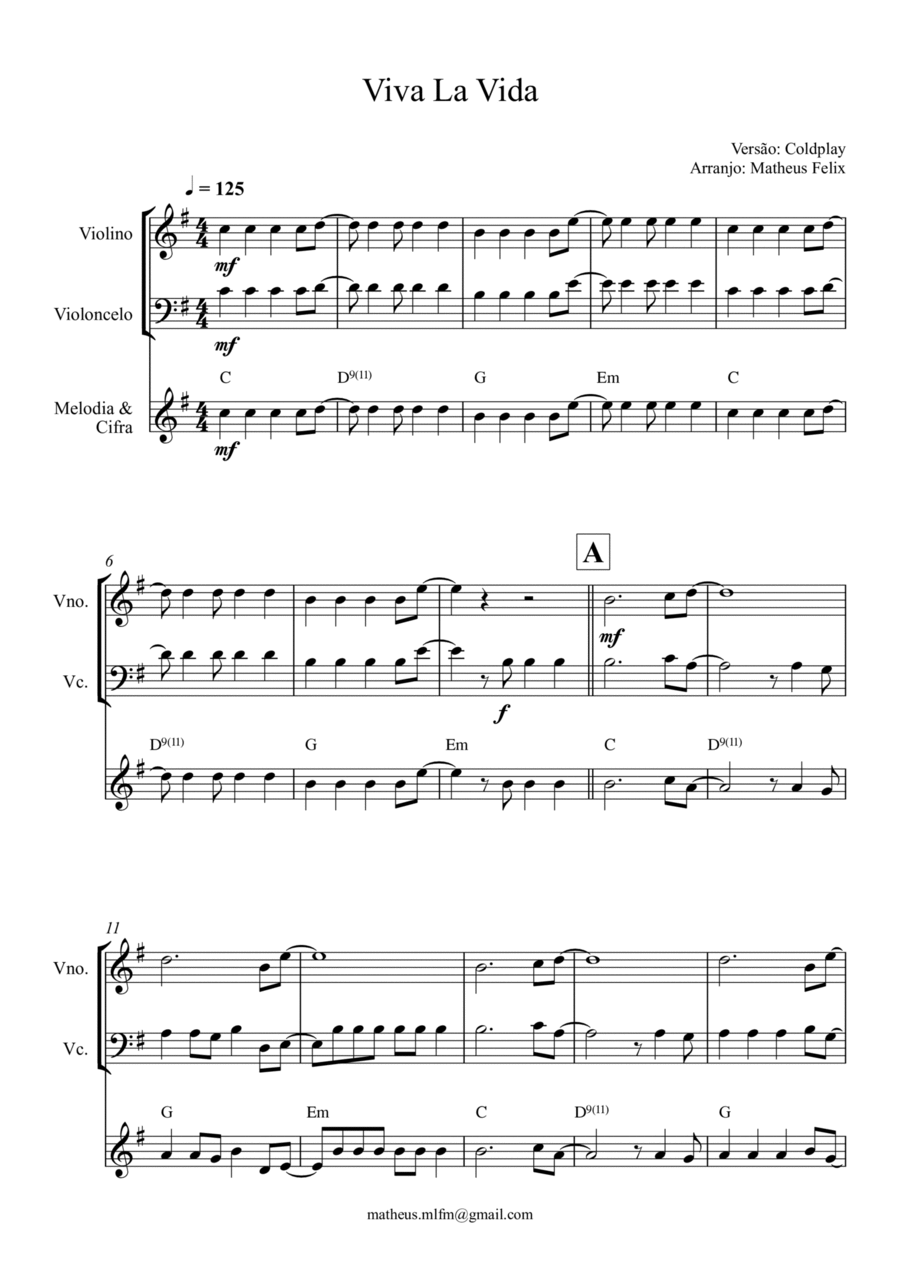Instrumental Duet,Piano Cello,Instrumental Duet,Piano,Violin - Level 1 - Digital Download SKU: A0.1365322 By Coldplay. By Chris Martin, Guy Berryman, Jon Buckland, and Will Champion. Arranged by Matheus Felix. Film/TV,Pop,Wedding. 11 pages. Matheus Felix #949643. Published by Matheus Felix (A0.1365322). Arranjo de Viva La Vida para Violino, Violoncelo e Piano Cifra:Neste empolgante arranjo de Viva La Vida, a energia épica da canção de Coldplay é reinterpretada com maestria para violino, violoncelo e piano cifra. O violino, desempenhando o papel principal, transmite a intensidade e a melodia cativante da música, proporcionando uma expressão emocional vÃvida e arrebatadora.O violoncelo, com suas linhas profundas e marcantes, contribui para a sonoridade grandiosa, adicionando uma dimensão emocional que ressoa com a narrativa épica da letra. O piano cifra, com seus acordes poderosos e arpejos dinâmicos, sustenta a estrutura da composição, intensificando a experiência auditiva.A interação vigorosa entre os instrumentos cria uma atmosfera imponente, refletindo a majestade e a determinação presentes em Viva La Vida. As transições dramáticas e os momentos de clÃmax destacam a complexidade da obra, mantendo a essência vibrante e impactante da música original.Este arranjo não apenas homenageia a obra-prima de Coldplay, mas também eleva a intensidade e a emotividade através da interpretação instrumental. Os músicos, com sua destreza técnica e paixão artÃstica, guiam os ouvintes por uma jornada sonora emocionante, capturando a grandiosidade e a resiliência que caracterizam Viva La Vida.
